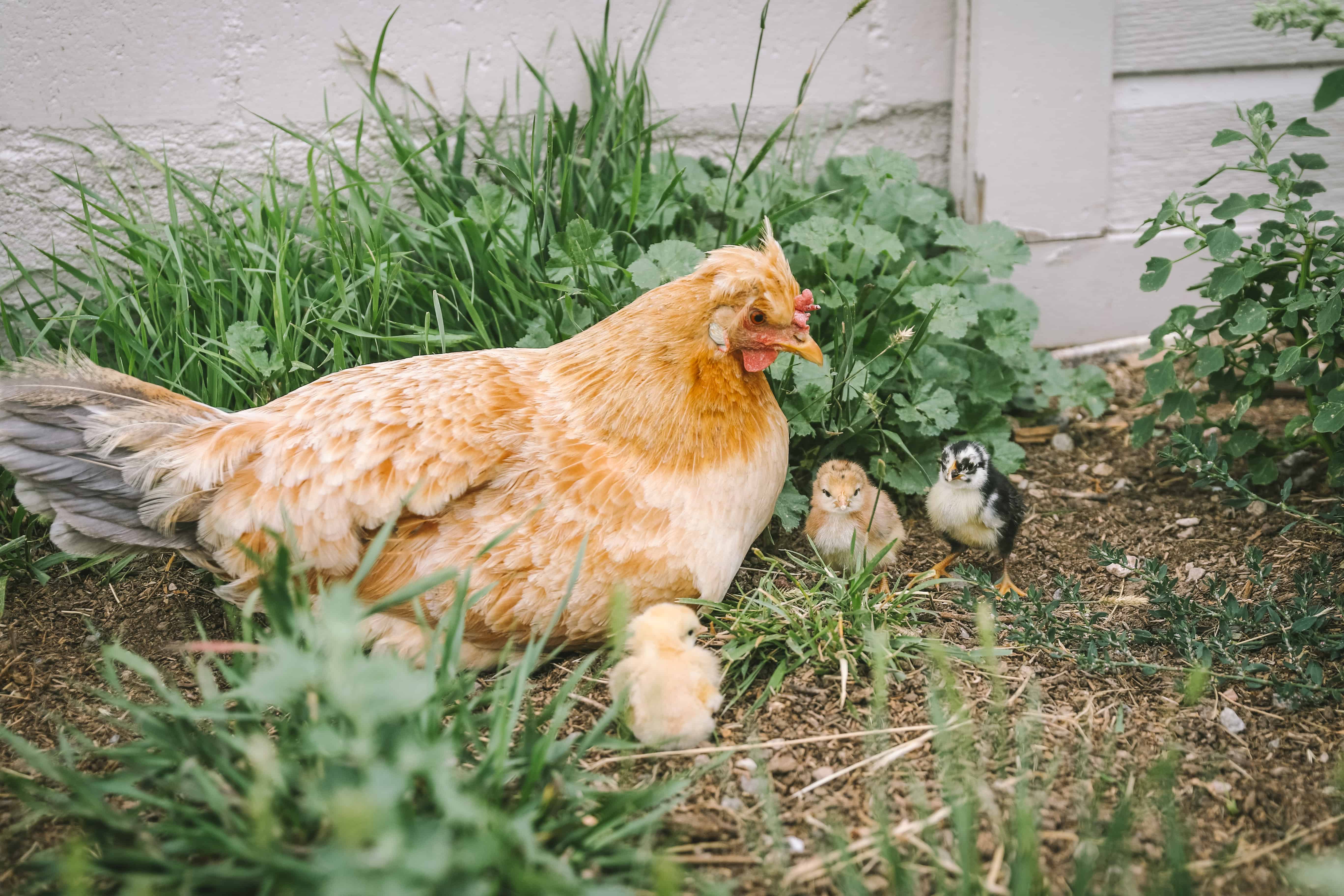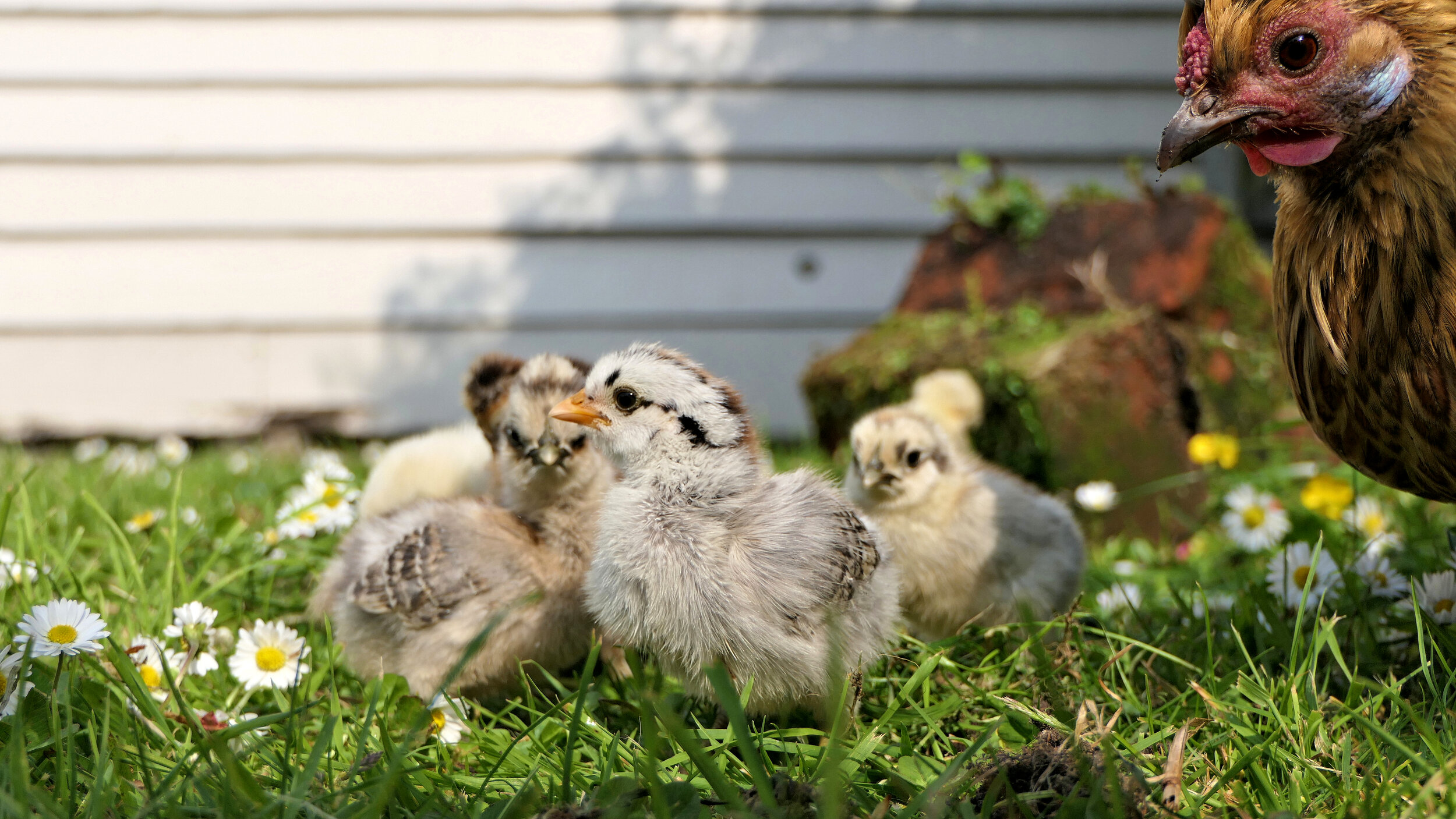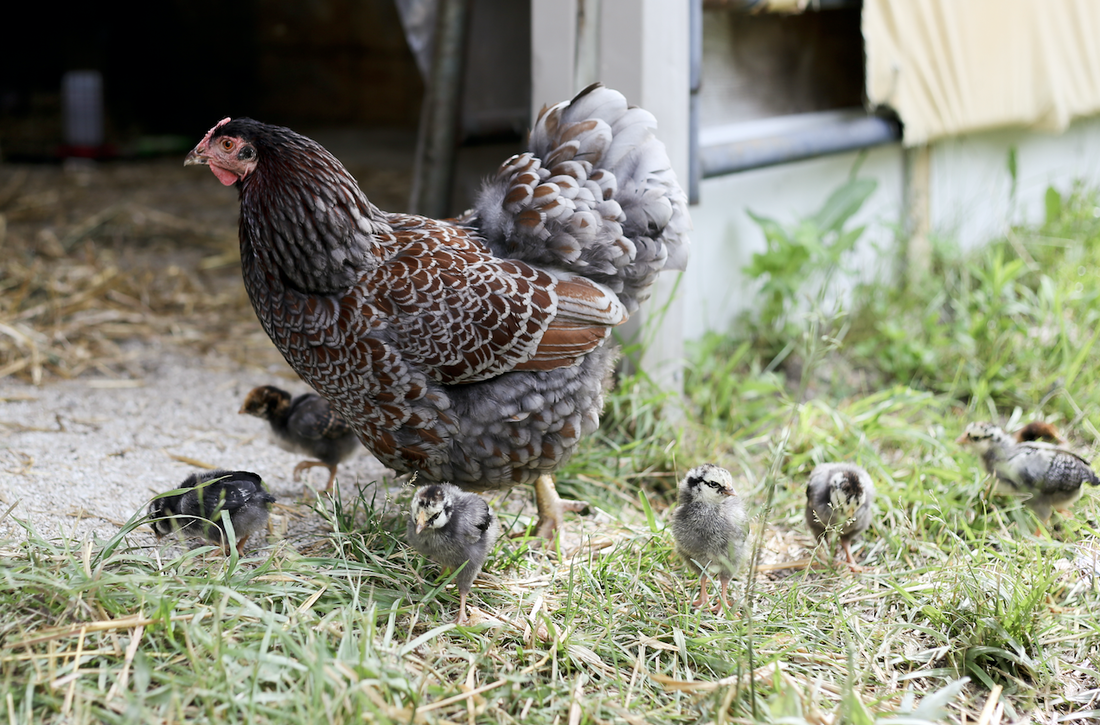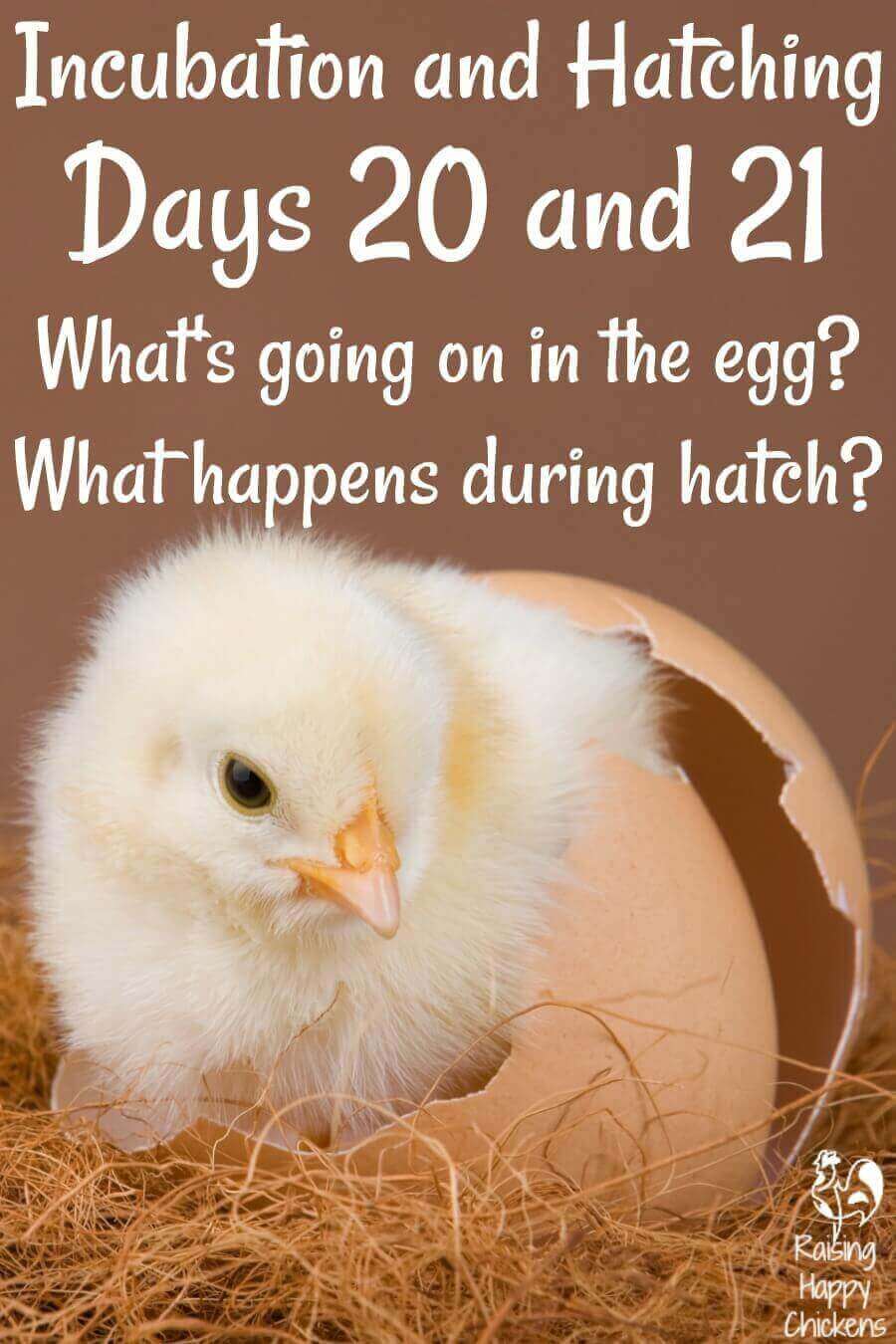Watching chicks hatch under a hen is a true miracle of nature. As part of chicken husbandry, this phenomenon can be observed in backyard coops and professional poultry farms alike. Chicken husbandry is the practice of raising chickens for egg production, meat, or other purposes. It involves providing the birds with food, shelter, and proper care. This article will provide an overview of chicken husbandry, focusing on the miracle of chicks hatching under a hen.
What is a Broody Hen?

A broody hen is a female chicken that has the natural maternal instinct to sit on a nest and care for eggs, as if they were her own. Broody hens will typically remain in the nest for several weeks, and will not move until the eggs are hatched. During this time, the hen will continuously turn and rearrange the eggs, and will also protect them from predators. The hen will also provide the warmth and humidity necessary for the eggs to develop into chicks. With proper care, a broody hen can successfully hatch her eggs and raise the chicks. Watching a broody hen hatch and nurture her chicks is truly a miracle of chicken husbandry.
What are the Benefits of Hatching Chicks with a Broody Hen?

One of the most rewarding aspects of keeping chickens is watching chicks hatch under their mother hen. It is incredibly satisfying to witness nature’s miracle unfold as the chicks struggle out of their shells and into the world. But there are other benefits to using a broody hen to hatch chicks, as well.
Temperature Regulation – A broody hen is able to regulate the temperature of the eggs by fluffing her feathers and adjusting her body heat. This ensures the eggs are kept at the ideal temperature for successful hatching.
Protection – Hens make excellent watchdogs, and when brooding, they are especially vigilant. The mother hen will protect her eggs from predators, as well as provide a safe and cozy environment for the chicks to hatch in.
Bonding – Hens form a strong bond with their chicks, providing them with warmth, protection, and food. This bond helps the chicks to learn important skills, including foraging, and encourages them to stay near their mother.
Nutrition – Broody hens feed their chicks a nutritious diet of bugs, worms, and other insects that they find around the coop. This helps to keep them healthy and strong, as well as preventing them from becoming ill.
Cost-Effective – Using a broody hen to hatch chicks is a much more cost-effective option than using an incubator. Not only do you save on the cost of the equipment, but you also save on the electricity costs associated with running an incubator.
Hatching chicks with a broody hen is a rewarding experience that offers numerous benefits. From temperature regulation to nutrition, the mother hen provides her chicks with everything they need to survive and thrive.
How to Incubate Chicks with a Broody Hen?

Identifying a Broody Hen: A broody hen is a chicken that is ready to hatch eggs. It is easy to identify a broody hen as they will appear tired and will spend most of the time sitting on the nest.
Setting Up a Nest:
- Create a nest for your broody hen with a comfortable bedding. Make sure that the nest is lined with straw or other materials for insulation.
- Place the nest in a quiet, draft-free area of the coop where the hen will not be disturbed.
- Place a few eggs in the nest and the hen will start to sit on them.
Hatching the Chicks:
- The broody hen will sit on the eggs for 21 days to incubate them. During this time, make sure to provide her with food and water.
- Once the chicks hatch, they will need to stay under the hen for at least another week in order to receive the warmth and protection they need.
- During this time, it is important to monitor the hen and chicks for any signs of distress. Make sure to keep the hen and chicks well-fed and provide them with clean water.
- Once the chicks are a week old, they can be moved to a larger coop and will no longer need the broody hen’s protection.
The miracle of chicks hatching under a hen is an exciting and rewarding experience for any chicken enthusiast. Incubating chicks with a broody hen can be a great way to raise healthy, happy chickens. With the right set-up and care, you can enjoy the satisfaction of seeing the chicks hatch and thrive under the care of their mother.
What is the Process of Chicks Hatching Under a Hen?

Hatching chickens with a broody hen is a natural process in which a hen sits on a clutch of eggs, incubates them, and hatches them about 21 days later. For those wanting to reap the rewards of raising their own chickens, this is an enjoyable, low-cost, and low-maintenance approach.
| Step | Description |
|---|---|
| Step 1 | Collect the eggs and place them in an incubator to be sure they are viable and fertile, or find a broody hen that is ready to sit on eggs. |
| Step 2 | Once the broody hen is prepared, transfer the eggs to her nest. The hen will take over and sit on the eggs. |
| Step 3 | The hen will incubate the eggs for about 21 days, during which time she will not leave the nest. She may get up to eat and drink, but will not leave the nest for long periods. |
| Step 4 | Once the eggs have been incubated for about 21 days, the chicks will start to hatch. This process can take up to 24 hours. |
| Step 5 | Once the chicks are hatched, the hen will take care of them and teach them how to survive. |
Hatching chickens with a broody hen is an exciting and rewarding process. Although it requires patience and time, it can be a great experience for those wanting to raise their own chickens.
What are the Challenges of Chicks Hatching Under a Hen?

- Temperature: Keeping the temperature at a suitable level for the chicks to survive is a challenge for chicks hatching under a hen. This is because the hen’s body temperature is not ideal for incubating the eggs.
- Light: The chicks need to be exposed to light during the hatching process. With a hen, it is difficult to control the amount of light the chicks are exposed to.
- Humidity: The humidity levels must be maintained for the chicks to hatch successfully. This is hard to achieve with a hen because the chicks are exposed to the hen’s natural body temperature and humidity levels.
- Nutrition: The chicks require a balanced diet to remain healthy. With a hen, it is difficult to provide the chicks with the necessary nutrition they need.
Hatching chicks under a hen can be a challenging process. It requires careful monitoring of the temperature, light, humidity and nutrition levels. If these are not maintained, the chicks may not survive the hatching process.
What are the Best Practices of Chicken Husbandry?
Space and Housing – Chickens need adequate and safe housing with enough space to move around and express natural behaviors. This can be a purpose-built chicken house or a secure, well-ventilated area.
Feed and Water – All chickens require a balanced diet that is high in protein and supplemented with vitamins and minerals. Free access to fresh, clean water should be provided at all times.
Healthcare – Chickens need regular health checks to ensure they are in good condition. Vaccinations, deworming, and treatments for parasites and mites should be carried out as necessary.
Egg Collection – Eggs should be collected regularly to ensure that the hens are not sitting on them for too long and to reduce the risk of egg-laying diseases.
Cleanliness – Chicken houses and runs should be kept clean and free from droppings to reduce the risk of disease.
Human Interaction – Chickens enjoy human interaction and should be handled carefully and with respect.
Frequently Asked Questions
How Long Does it Take for a Chick to Hatch?
The hatching process typically takes 21 days, depending on the breed of chicken. During this period, the egg must be kept at a steady temperature and humidity. The chick breaks out of its shell by using an egg tooth located on its beak. Once the chick has emerged, it will require food and water, and must be kept warm in order to survive.
How Often Do Chickens Need to be Fed?
Chickens should be fed a diet of high-quality feed at least twice a day, once in the morning and once in the evening. The amount of feed provided should be adequate to meet their daily nutritional requirements, with treats such as vegetables, fruits, and insects given occasionally. It is important to provide clean, fresh water at all times.
What type of housing is suitable for chickens?
Chickens require a safe and secure housing environment that is well ventilated and dry. The best type of housing for chickens is a coop or shed with a secure run attached. The coop should be large enough for the chickens to move around in, and the run should be enclosed with a fence or netting to keep predators out. The coop should also include nesting boxes and perches for the chickens to roost on. The run should be covered with a roof to protect chickens from the elements. Proper bedding and clean water should also be provided.
What Kind of Care Do Chicks Need When They First Hatch?
- Provide a Warm Environment: Newly hatched chicks need to be kept in a warm, draft-free environment, preferably with a temperature of 90-95°F (32-35°C).
- Food and Water: Chicks need access to a feeder and waterer, as well as a balanced starter feed with a high protein content, typically 20-21%.
- Bedding: Fresh, dry bedding should be provided in the form of wood shavings, straw, or small peat moss.
- Protection from Predators: New chicks are extremely vulnerable to predators, so they must be kept in a secure area, preferably with a covered top.
- Health Care: Chicks should be checked regularly for signs of illness and treated accordingly. Vaccinations are recommended for certain diseases.
What type of food should be given to chickens?
- Grain: Chickens need a balanced diet of grain, such as wheat, corn, oats and barley. These grains should be finely ground and mixed with other ingredients such as vitamins and minerals. It is also important to offer fresh fruits and vegetables as a source of natural vitamins and minerals.
- Protein: Protein is essential for healthy chickens. High-quality protein sources include soybean meal, fish meal, and meat meal. These should be supplemented with smaller amounts of insects, such as mealworms and crickets, for a balanced diet.
- Vitamins and Minerals: In addition to the vitamins and minerals found in natural foods, chickens need additional supplements to ensure their health and development. These supplements can be provided in the form of commercial vitamin and mineral mixes, or as homemade supplements.
- Grit: Grit is an important part of a chicken’s diet, as it helps with digestion and the breakdown of food. Grit should be offered free-choice, and can include items such as crushed eggshells, sand, and small stones.
- Water: Water is essential for chickens, and it should be offered in a container that is easily accessible and regularly cleaned.
Conclusion
Chicken husbandry is a rewarding and educational experience for many people. From understanding the needs of a chicken to watching a chick hatch from an egg, it can be a fulfilling experience for both adults and children alike. Not only will it teach you about the cycles of life, but it can also provide you with the opportunity to enjoy fresh eggs and the companionship of a unique pet.
